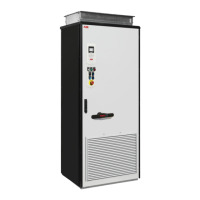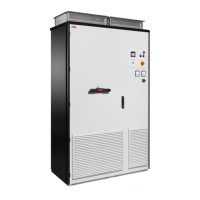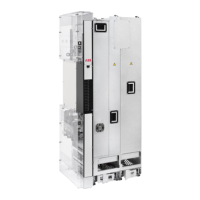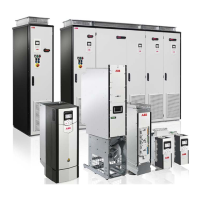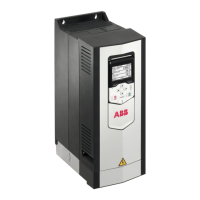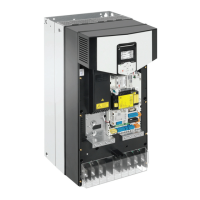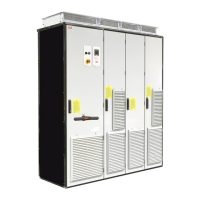(79.12) (79.42)
OVERLOAD
UNDERLOAD
ALLOWED
OPERATION
79.51
79.21
79.55
79.25
Speed
Frequency
79.01 79.02
79.03
79.04
79.05
The custom user load curve provides a function that monitors an input signal (eg.
Motor torque or motor current) as a function of drive output speed or frequency.
The function includes both high limit (overload) and low limit (underload)
monitoring. Overload monitoring can, for example, be used to detect a pump
becoming clogged or a saw blade hitting a knot. Underload monitoring can detect
the load being lost, for example because of the snapping of a transmission belt.
The monitoring is effective within a motor speed and/or frequency range. The
frequency range is used with a frequency reference in scalar motor control mode;
otherwise, the speed range is used. The range is defined by five speed (parameters
79.01...79.05) values. The values are positive, but the monitoring is symmetrically
active in the negative direction as the sign of the monitored signal is ignored.
Outside the speed/frequency range, the monitoring is disabled.
An underload (79.51…79.25) and overload (79.51…79.25 Underload curve point
5 (page 540)) limit is set for each of the five speed or frequency points. Between
these points, the limits are interpolated linearly to form overload and underload
curves.
The action (none, warning or fault) taken when the signal exits the allowed
operation area can be selected separately for overload and underload conditions
(parameters 79.19 and 79.49 respectively). Each condition also has an optional
timer to delay the selected action (79.18 and 79.48).
The diagram below illustrates various underload protection scenarios and possible
responses.
56 ESP program features
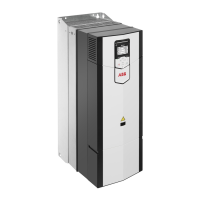
